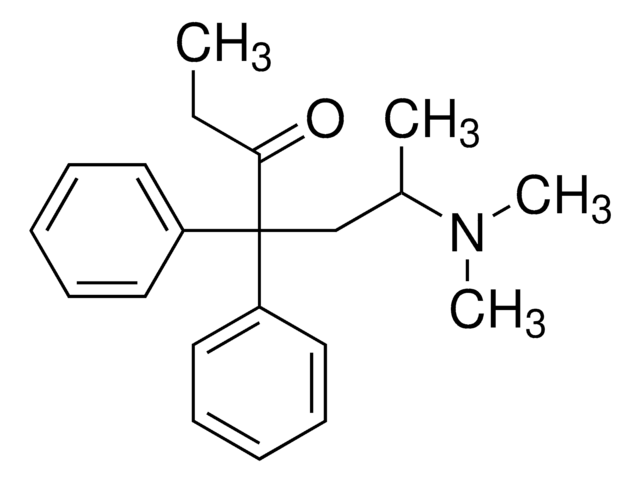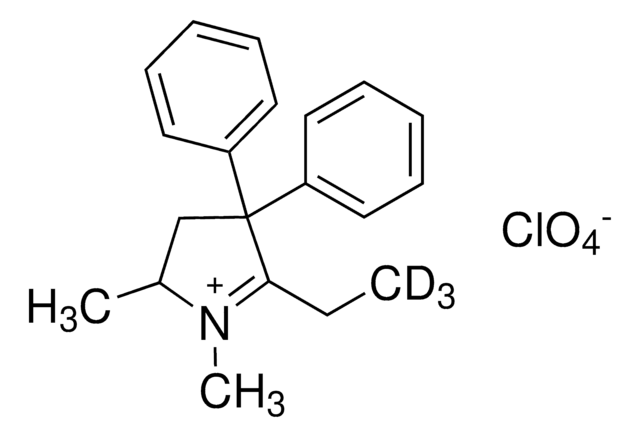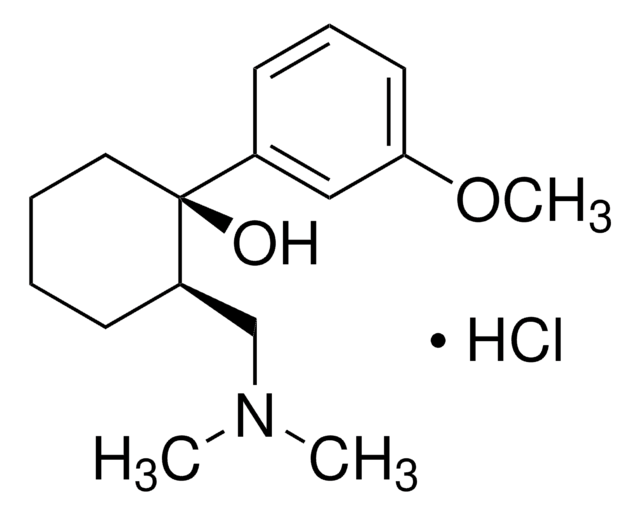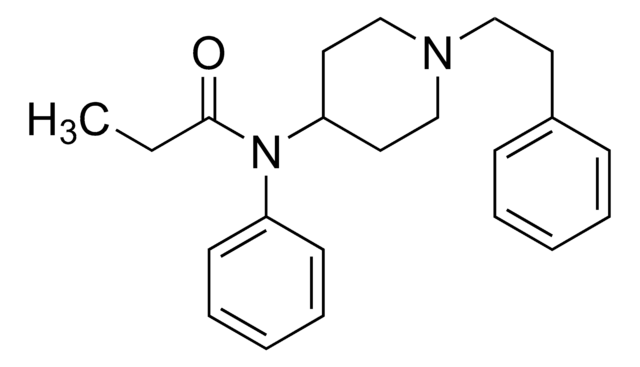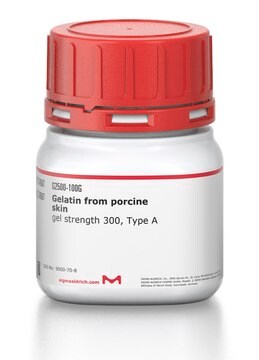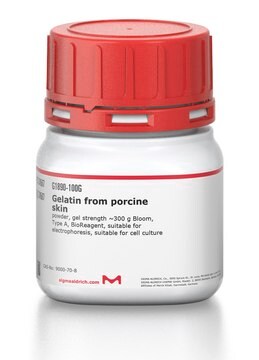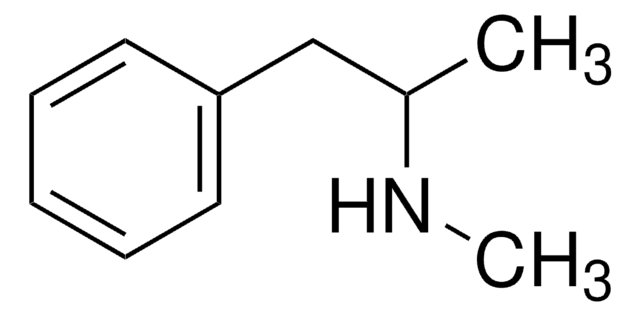Kluczowe dokumenty
E-006
Nadchloran EDDP
ampule of 10 mg, certified reference material, Cerilliant®
Synonim(y):
EDDP perchlorate, 2-Ethylidene-1,5-dimethyl-3,3-diphenylpyrrolidine perchlorate
About This Item
Polecane produkty
klasa czystości
certified reference material
Formularz
solid
Właściwości
Snap-N-Spike®/Snap-N-Shoot®
opakowanie
ampule of 10 mg
producent / nazwa handlowa
Cerilliant®
kontrola substancji
regulated under CDSA - not available from Sigma-Aldrich Canada
metody
gas chromatography (GC): suitable
liquid chromatography (LC): suitable
Zastosowanie
forensics and toxicology
Format
neat
temp. przechowywania
−20°C
Opis ogólny
Informacje prawne
produkt powiązany
Hasło ostrzegawcze
Danger
Zwroty wskazujące rodzaj zagrożenia
Zwroty wskazujące środki ostrożności
Klasyfikacja zagrożeń
Acute Tox. 3 Oral - STOT SE 3
Organy docelowe
Central nervous system
Kod klasy składowania
6.1C - Combustible acute toxic Cat.3 / toxic compounds or compounds which causing chronic effects
Klasa zagrożenia wodnego (WGK)
WGK 3
Temperatura zapłonu (°F)
Not applicable
Temperatura zapłonu (°C)
Not applicable
Wybierz jedną z najnowszych wersji:
Certyfikaty analizy (CoA)
It looks like we've run into a problem, but you can still download Certificates of Analysis from our Dokumenty section.
Proszę o kontakt, jeśli potrzebna jest pomoc Obsługa Klienta
Masz już ten produkt?
Dokumenty związane z niedawno zakupionymi produktami zostały zamieszczone w Bibliotece dokumentów.
Nasz zespół naukowców ma doświadczenie we wszystkich obszarach badań, w tym w naukach przyrodniczych, materiałoznawstwie, syntezie chemicznej, chromatografii, analityce i wielu innych dziedzinach.
Skontaktuj się z zespołem ds. pomocy technicznej